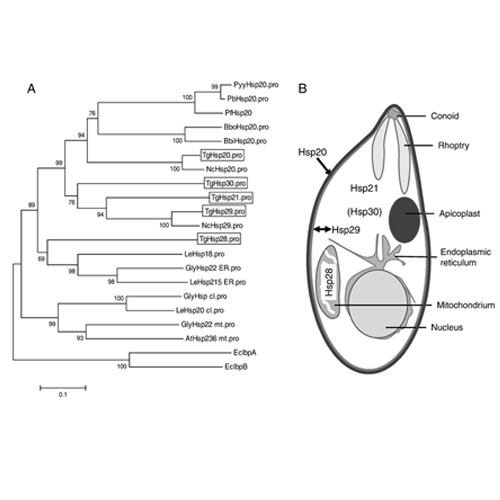Structural and functional diversity in the family of small heat shock proteins from the parasite Toxoplasma gondii
19-Aug-2009
Biochim. Biophys. Acta, 2009, 1793(11), 1738-1748, doi:10.1016/j.bbamcr.2009.08.005 published on 19.08.2009
Biochim. Biophys. Acta, online article
Biochim. Biophys. Acta, online article
Small heat shock proteins (sHsps) are ubiquitous molecular chaperones which prevent the nonspecific aggregation of non-native proteins. Five potential sHsps exist in the parasite Toxoplasma gondii. They are located in different intracellular compartments including mitochondria and are differentially expressed during the parasite's life cycle. Here, we analyzed the structural and functional properties of all five proteins. Interestingly, this first in vitro characterization of sHsps from protists showed that all T. gondii sHsps exhibit the characteristic properties of sHsps such as oligomeric structure and chaperone activity. However, differences in their quaternary structure and in their specific chaperone properties exist. On the structural level, the T. gondii sHsps can be divided in small (12–18 subunits) and large (24–32 subunits) oligomers. Furthermore, they differ in their interaction with non-native proteins. While some bind substrates tightly, others interact more transiently. The chaperone activity of the three more mono-disperse T. gondii sHsps is regulated by temperature with a decrease in temperature leading to the activation of chaperone activity, suggesting an adaption to specific steps of the parasite's life cycle.











